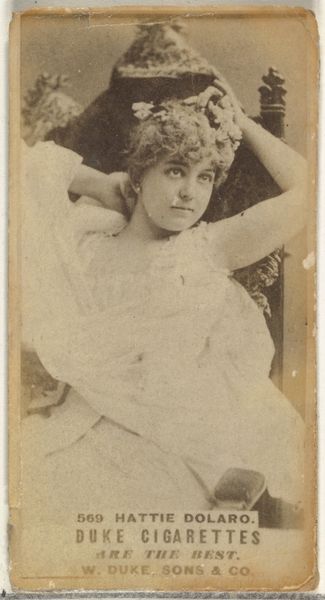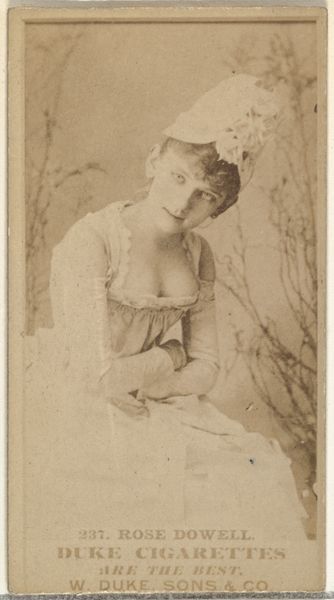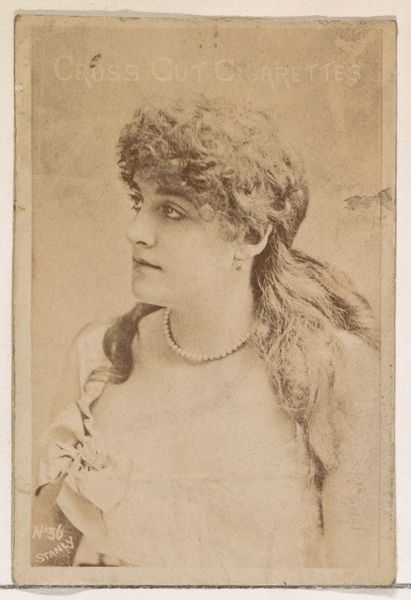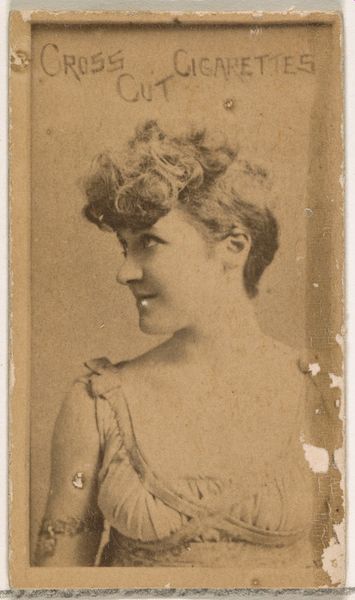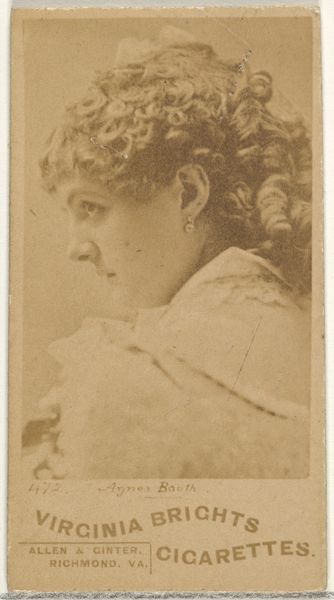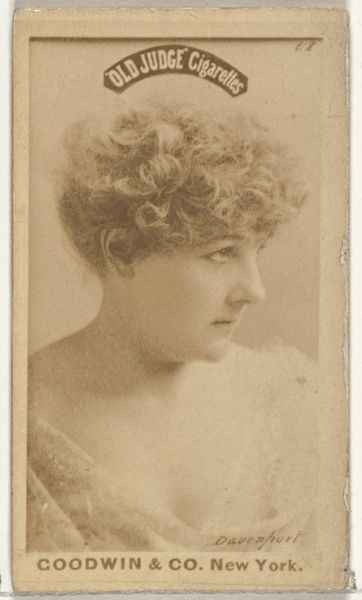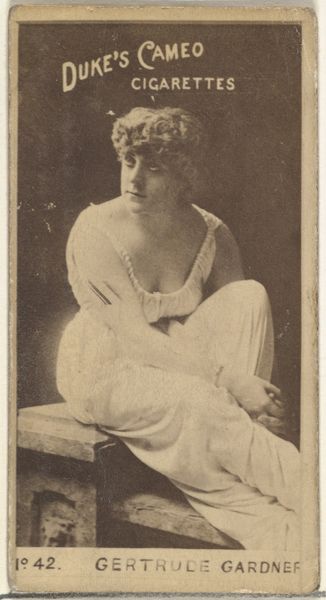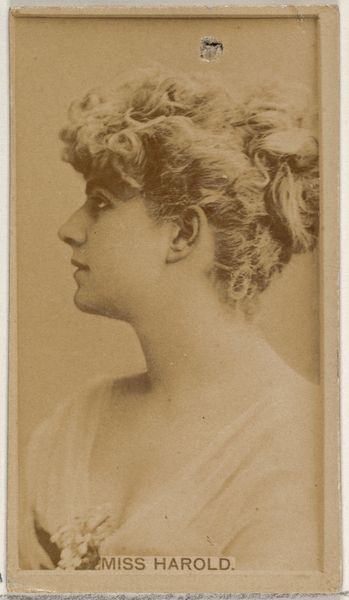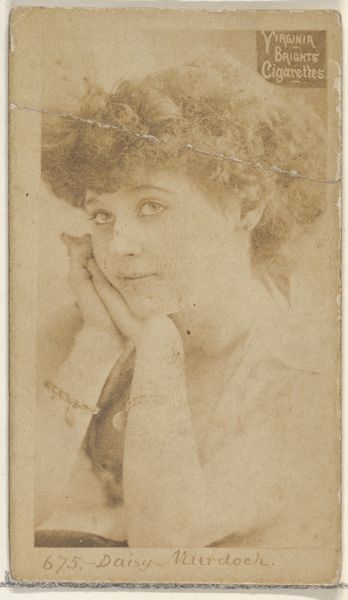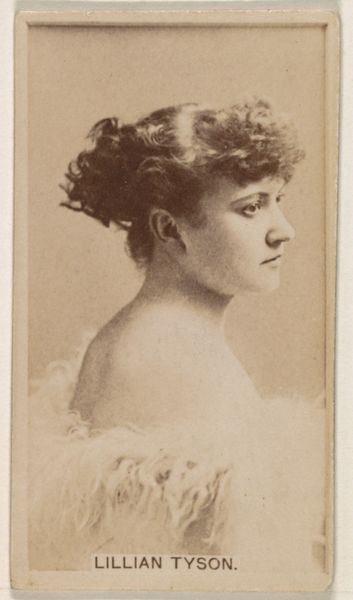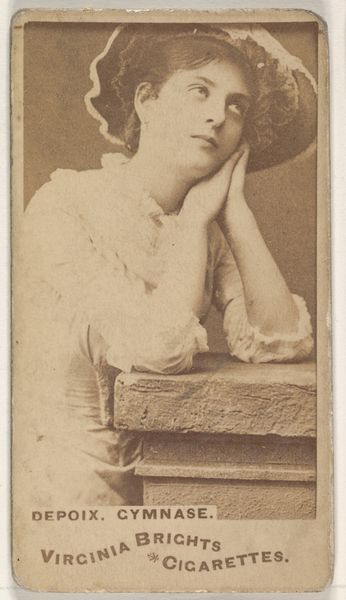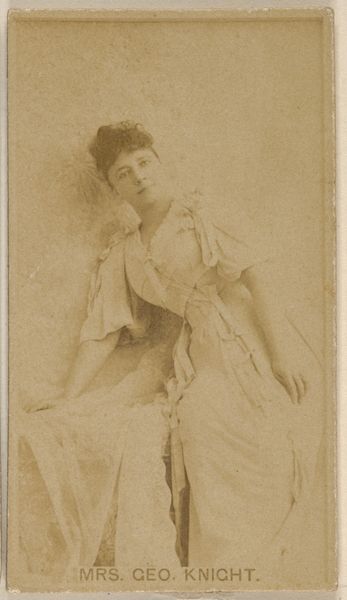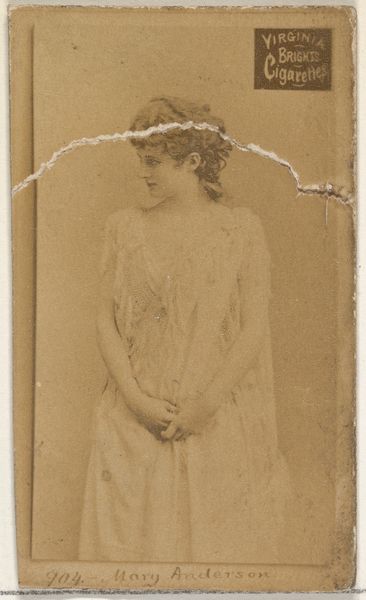
Mlle. Deanville, from the Actors and Actresses series (N145-8) issued by Duke Sons & Co. to promote Duke Cigarettes 1890 - 1895
0:00
0:00
drawing, print, photography, photomontage
#
portrait
#
drawing
# print
#
photography
#
photomontage
Dimensions: Sheet: 2 11/16 × 1 3/8 in. (6.8 × 3.5 cm)
Copyright: Public Domain
Editor: This is a trade card featuring Mlle. Deanville, made by Duke Sons & Co. sometime between 1890 and 1895, a photographic print likely mass-produced for promotional purposes. It's interesting how photography, which we often see as documenting reality, is being used here to sell something entirely different. What does this tell us about its original use? Curator: Exactly. Note that the portrait is also a photomontage – observe how it’s constructed. We should be asking: what kind of labor was involved in producing and circulating such an image? We must look into how photography at this moment shifts from a method of documentation to mass produced commodity meant for popular consumption and distribution as advertisement material? This piece is deeply entrenched in its context; think of the tobacco industry and its practices. Editor: That’s fascinating. I hadn't considered the mass production aspect so deeply. Were these cards considered disposable, or were they collected and valued at the time? Curator: A crucial question. Were they designed to be discarded, feeding a cycle of consumption, or were they intended to be collected and thus possess an enduring, albeit minor, cultural value? Examining the materiality – the paper stock, the print quality – can give clues, or at least further points to consider. Also the mode of circulation of such advertisement mediums allows us to speculate on how marketing developed at the time. Editor: That gives me a lot to think about in terms of how we value art and its purpose, especially its physical form and context of its production. Curator: Absolutely, by exploring those parameters, we are on the way to understanding cultural shifts and social practices of those eras.
Comments
No comments
Be the first to comment and join the conversation on the ultimate creative platform.
